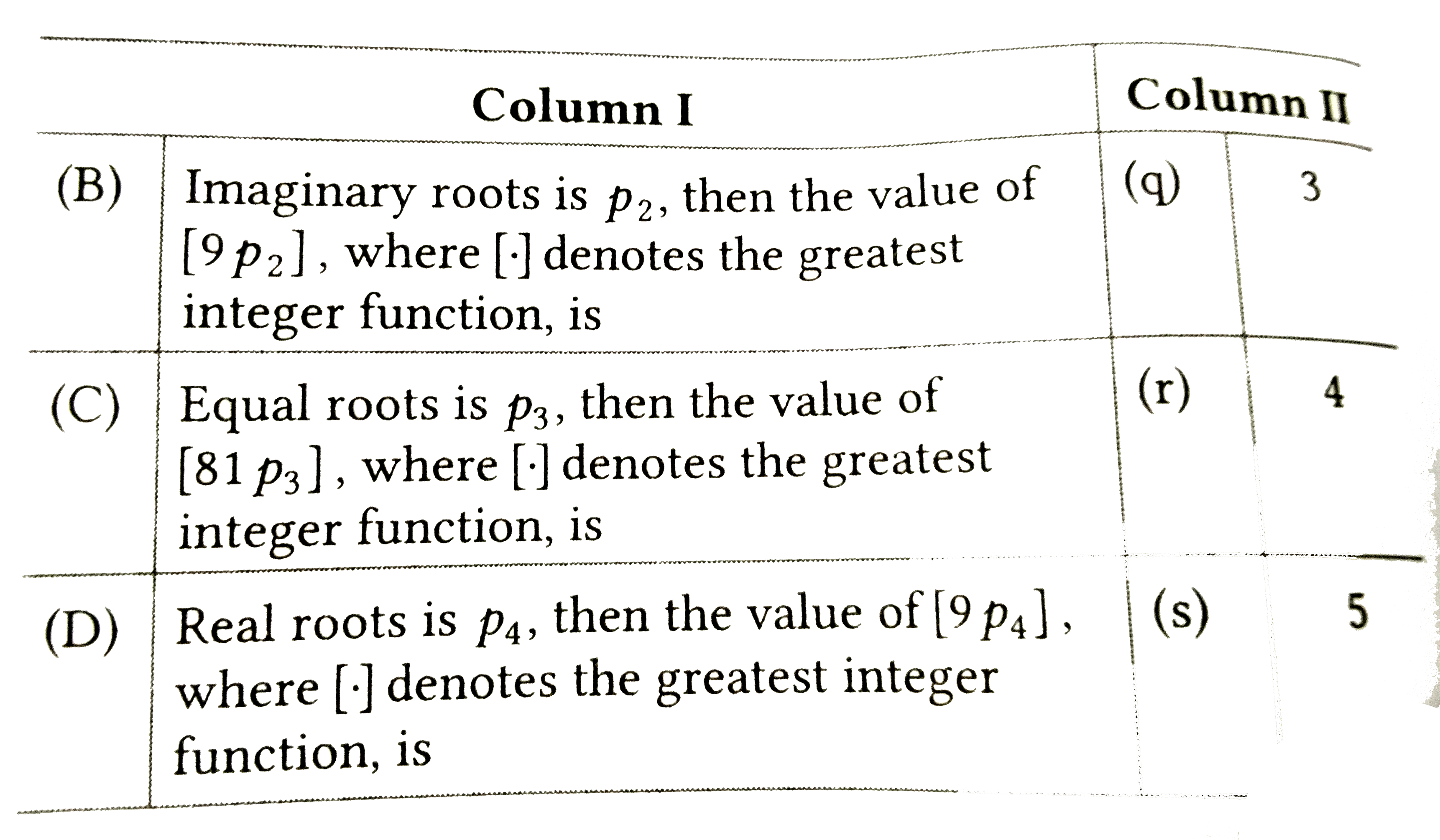A number x is chosen at random from the numbers −3, −2, −1, 0, 1, 2, 3 the probability that |x|<2 is 57 (b) 27 (c) 37 (d) 17
To solve the problem, we need to find the probability that the absolute value of a randomly chosen number x from the set −3,−2,−1,0,1,2,3 is less than 2.
1. Identify the Sample Space:
The numbers we can choose from are:
−3,−2,−1,0,1,2,3
This gives us a total of 7 numbers.
2. Determine the Condition for Favorable Outcomes:
We need to find the values of x such that:
|x|<2
This means we are looking for numbers whose absolute values are less than 2.
3. List the Values Satisfying the Condition:
The absolute values of the numbers from our sample space are:
- For −3: |−3|=3 (not less than 2)
- For −2: |−2|=2 (not less than 2)
- For −1: |−1|=1 (less than 2)
- For 0: |0|=0 (less than 2)
- For 1: |1|=1 (less than 2)
- For 2: |2|=2 (not less than 2)
- For 3: |3|=3 (not less than 2)
Therefore, the numbers that satisfy |x|<2 are:
−1,0,1
4. Count the Favorable Outcomes:
The favorable outcomes are −1,0,1, which gives us a total of 3 favorable outcomes.
5. Calculate the Probability:
The probability P is given by the formula:
P=Number of favorable outcomesTotal number of outcomes=37
6. Conclusion:
Therefore, the probability that |x|<2 is:
37
The correct answer is option (c) 37.
The numbers we can choose from are:
−3,−2,−1,0,1,2,3
This gives us a total of 7 numbers.
We need to find the values of x such that:
|x|<2
This means we are looking for numbers whose absolute values are less than 2.
The absolute values of the numbers from our sample space are:
- For −3: |−3|=3 (not less than 2)
- For −2: |−2|=2 (not less than 2)
- For −1: |−1|=1 (less than 2)
- For 0: |0|=0 (less than 2)
- For 1: |1|=1 (less than 2)
- For 2: |2|=2 (not less than 2)
- For 3: |3|=3 (not less than 2)
−1,0,1
The favorable outcomes are −1,0,1, which gives us a total of 3 favorable outcomes.
The probability P is given by the formula:
P=Number of favorable outcomesTotal number of outcomes=37
Therefore, the probability that |x|<2 is:
37
The correct answer is option (c) 37.
Topper's Solved these Questions
Similar Questions
Knowledge Check
If x represents a number picked at random from the set {−3,−2,−1,0,1,2}, what is the probability that x will satisfy the inequality 4−3x<6?
A16B13C12D23
If a number x is chosen at random from the number −2,−1,0,1,2. What is the probability that x2<2?
View SolutionAn integer is chosen at random from the numbers ranging from 1 to 50. What is the probability that the integer chosen is a multiple of 2 or 3 or 10?
View SolutionTwo numbers b and c are chosen at random with replacement from the numbers 1, 2, 3, 4, 5, 6, 7, 8 and 9. Find the probability that x2+bx+c>0 for all x∈R.
View SolutionLet n=10λ+r, where λ,r∈N,0≤r≤9. A number a is chosen at random from the set {1, 2, 3,…, n} and let pn denote the probability that (a2−1) is divisible by 10.
If r=0, then npn equals
View SolutionA number x is selected at random from the numbers 1, 4, 9, 16 and another number y is selected random from the numbers 1, 2, 3, 4. Find the probability that the value of xy is more than 16.
View SolutionIf two distinct numbers m and n are chosen at random form the set {1, 2, 3, …, 100}, then find the probability that 2m+2n+1 is divisible by 3.
View SolutionTwo numbers a and b are chosen at random from the set {1,2,3,4,...,0} with replacement. The probability that the equation x2+√2(a−b)x+b=0 has


View Solution